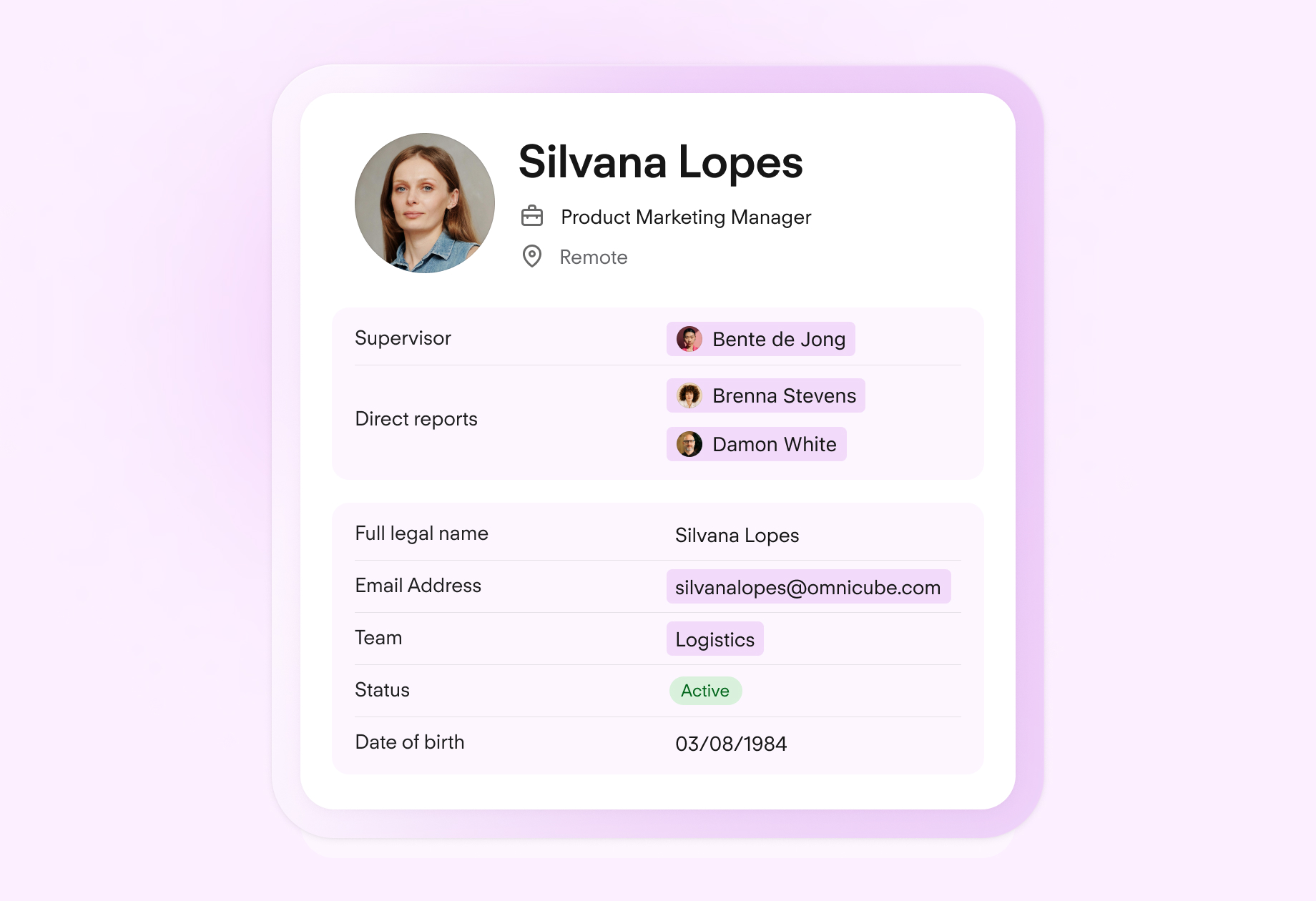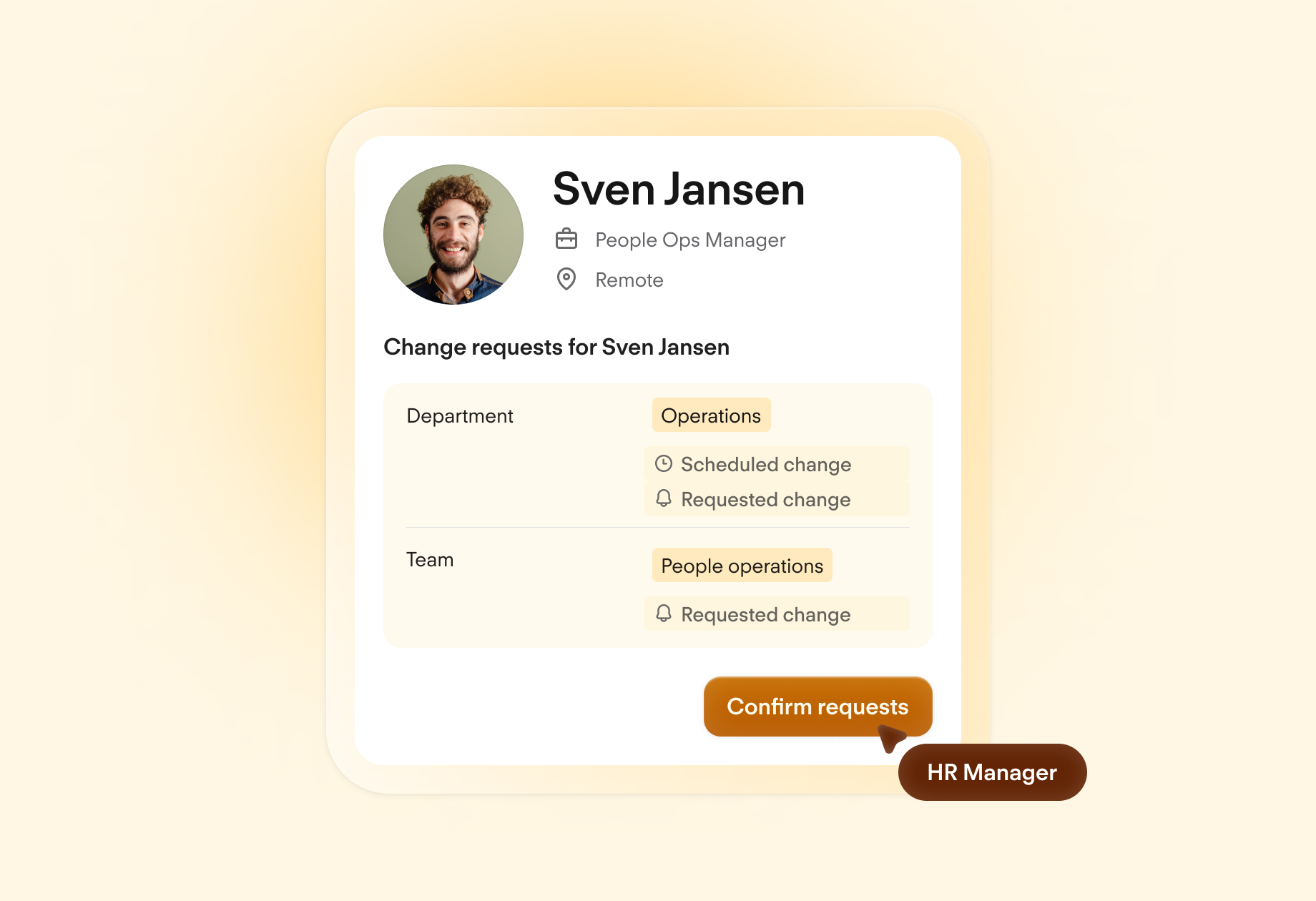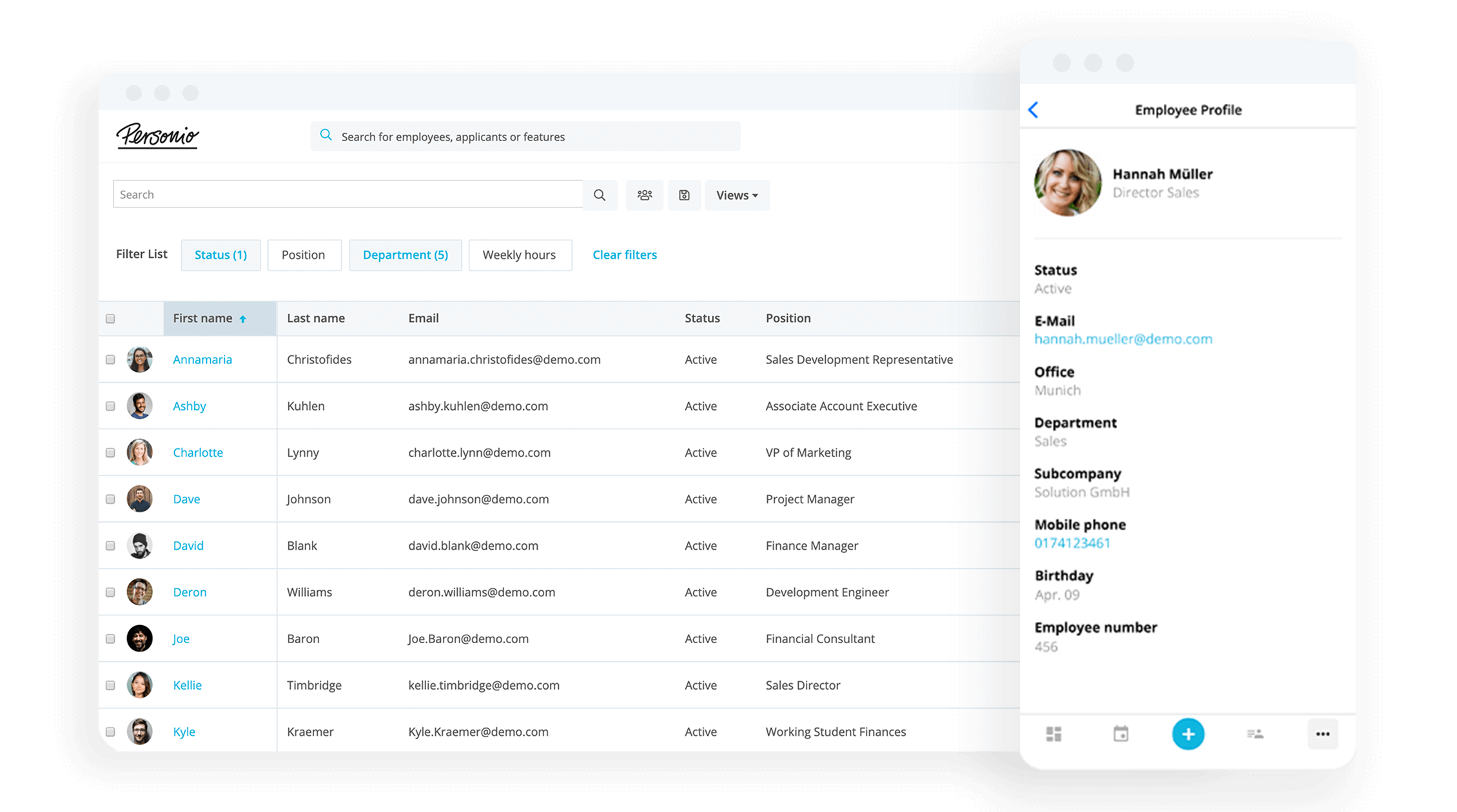The Three Key Types Of Employment Status

When it comes to employment status, the devil is truly in the details. That's because, while common parlance may consider ‘employees’ as a catchall term, there are three key types of employment status in the UK that need to be kept in mind.
So, what are they, how do they differ from one another, and why does it matter knowing more about them for your organizational structure? Let’s dive into the topic today.
From applicant to employee, in just one click. Here’s how Personio helps.Contents
- 1What Is Employment Status?
- 2What are the Different Types of Employment Status?
- 3What are the Three Types of Employment Status?
- 4Why Is It Important To Determine Employment Status?
- 5How Do You Know What An Employee’s Status Should Be?
- 6What Happens If Employee Status Is Not Clear?
- 7HR Best Practice: Managing Employment Status
What Is Employment Status?
Employment status, and its varying types, typically has a direct impact on employment rights and the responsibilities of employers. That’s why defining them, and understanding them, is so important.
What are the Different Types of Employment Status?
If we widen our scope, there are many types of employment status. In fact, there are six different types of employment status in the UK, which include:
Worker
Employee
Employee Shareholders
Self-Employed
Contractors
Directors
Officeholders
Of course, one person can be several of these at once. However, for this discussion, we’ll focus on the three most common types of employment status in UK workplaces.
What are the Three Types of Employment Status?
In a British HR and employment context, the three relevant types of employment status are workers, employees, and self-employed people (or contractors).
Keep in mind: Someone may have a different employment status as far as UK tax law is concerned. This status is independent of their employment status in the eyes of their employer or with regards to employment law – but it might affect the way you (as the person working with them) treat their payment, specifically with regards to PAYE (we’ll cover more on that later).
Why Is It Important To Determine Employment Status?
It’s really important to know whether the people who work for you are employees, workers, or self-employed people because these definitions are meaningful in a UK employment context.
Their definition affects their employment rights and impacts your legal responsibilities as an employer.
When you hire someone, their official employment status will impact the way they work and may influence the working relationship between you. More importantly, their employment status governs the legal obligations you have around their work.
For example, Crossland Solicitors says, "employees enjoy an implied duty of trust and confidence from their employers, and the right not to be unfairly dismissed, neither of which are available to workers, or self-employed contractors".
Using the wrong type of employment status (even unintentionally) can have significant ramifications for both your company and the employee. Over the years, several high-profile status claims have been dealt with by the UK Supreme Court.
Centralise your employee data

Stop relying on lists and spreadsheets. Organise and edit personnel files and documents with ease, all in one secure, legally compliant place.
Protect your people filesWhy It Matters: The Pimlico Plumbers Example
Our first example is Pimlico Plumbers. They lost a case with a heating engineer who had worked for them when he was determined to be a worker and not self-employed. But, why is this example important?
Although workers do not get the full range of employment protection rights that full-time staff do, they are entitled to elements like holiday pay. Self-employed people, on the other hand, run their own businesses, don’t get holiday or sick pay, and generally provide quotes and submit invoices.
The judge said that the terms of his contract, “enabled the company to exercise tight administrative control over him during his periods of work for it; to impose fierce conditions on when and how much it paid to him, which were described at one point as his wages; and to restrict his ability to compete with it for plumbing work following any termination of their relationship”.
The judge ruled that Pimlico Plumbers couldn’t be considered to be a customer of his, and he was, therefore, a worker – not self-employed.
Why It Matters: The Uber Example
In February 2021, the UK Supreme Court ruled that Uber drivers are workers, not self-employed. The BBC reported that the decision could mean thousands of Uber drivers are entitled to minimum wage and holiday pay.
The court determined that drivers were in a position of subordination to Uber. The Supreme Court ruled that Uber has to consider its drivers to be workers from the time they log on to the app until they log off. During this time all the rights given by the government to those holding worker status are applicable.
Why It Matters: The Example of Foster Carers
In another example, the CIPD noted that The Employment Appeal Tribunal (EAT) ruled that foster carers who ‘operated under an agreement with a local authority’ were, in fact, employees.
Why? Because “the level of control placed upon the carers by the authority meant that a contract of employment was present.”
How Do You Know What An Employee’s Status Should Be?
It’s complicated, but we’ll do our best to break each of them down…
What Is A Worker, What Are Their Rights And What Are They Not Usually Entitled To?
Picturing a worker typically conjures up the image of someone in overalls, a uniform, or someone who does a job where they can (often, but not always) easily be replaced by someone else. While this stereotype isn’t completely accurate, it may be helpful to start with this mindset.
According to gov.uk, a person is a ‘worker’ if they:
Have a contract to do work or services, personally, for a reward (Note: This contract does not have to be a written one! For more information read our blog post on UK Employment Contracts: Basics & Key Considerations)
Are rewarded by money or a benefit in kind
Only have a limited right to subcontract
Have to turn up for work, even if they don’t want to
Aren’t doing the work as part of their own limited company where their ‘employer’ is a customer or client.
Workers are entitled to employment rights including:
Minimum wage
Protection against unlawful deductions from wages
Statutory paid holiday
Statutory minimum paid rest breaks
The right not to work for than 48 hours on average per week (unless they choose to opt out)
Protection against unlawful discrimination
The right not to be treated less favorably if they work part-time.
They may also be entitled to statutory sick pay, maternity, paternity, adoption, and shared parental pay.
Workers aren’t usually entitled to:
Minimum notice periods if their employment will be ending
Protection against unfair dismissal
The right to request flexible working
Time off for emergencies
Statutory redundancy pay.
Take a further look at the government website to see more detailed information about casual or irregular work and the circumstances that govern whether these people are considered to be workers or not.
What Is An Employee, What Are Their Rights And What Are They Not Usually Entitled To?
Generally, when you think about someone who works for you, it’s a fairly common assumption to consider them to be employees. Officially, gov.uk says that “an employee is someone who works under an employment contract.” They have all the rights that workers do, and a few more.
Employees are also entitled to:
Statutory sick pay
Statutory maternity, paternity, adoption, and shared parental leave and pay (gov.uk says that workers only get pay, not leave)
Minimum notice periods
Protection against unfair dismissal
The right to request flexible working
Time off for emergencies
Statutory redundancy pay.
It’s worth noting that some of these rights require an employee to have worked for a minimum length of time before they qualify. This is usually determined by the terms of their employment contract.
To consider whether someone who works for you is an employee or not, take a look at the list on this page: https://www.gov.uk/employment-status/employee. If most of the statements are true, they’re probably an employee.
What Is A Self-Employed Person, What Are Their Rights And What Are They Not Usually Entitled To?
Self-employed people run their own businesses. They have the responsibility to ensure their business’s success or failure, and they don’t have the same employment rights and responsibilities that employees get.
Interestingly, though, someone can be both an employee and self-employed if, for example, they work for an employer part-time and themselves at other times. For example, if someone works for you during the day, but sells stuff on eBay, works as a DJ, or runs their own startup on weekends, they are both an employee (of yours), and self-employed.
It’s important to note that employment law doesn’t cover self-employed people in most cases because they are their own boss. As such, self-employed people are not entitled to the rights of an employee or a worker in the eyes of UK law!
They do still have certain rights. Self-employed people are entitled to:
Protection for their health and safety and (in some cases), protection against discrimination.
Their other rights and responsibilities are set out by the terms of any contract/s they have in place with their client/s.
When employing a self-employed person, it’s important to make sure that your company checks whether they are exempt from pay-as-you-earn (PAYE) tax!
Centralise your employee data

Stop relying on lists and spreadsheets. Organise and edit personnel files and documents with ease, all in one secure, legally compliant place.
Protect your people filesWhat Happens If Employee Status Is Not Clear?
If in doubt, read the government documentation first. You can also call HMRC on 0300 123 2326 to check if someone you employ is classed as self-employed or employed. Then, if it’s still not clear, it may be wise to consult an employment lawyer.
Take Note: While an employee contract usually determines the outcome of most employment law disputes, just because you’ve given someone a contract that says they’re self-employed, that doesn’t prove it. They might still be considered employees or workers in the eyes of the law.
For example, this blog post by acas says that even with a written contract, if a person has less control over how, when, and whether they work, this may make them more likely to be a worker or an employee.
HR Best Practice: Managing Employment Status
Once the appropriate contracts have been signed and someone’s employment status has been identified, it’s wise to make sure all the documentation relating to their employment is safely stored in an easily-accessible location.
An HR software, just like Personio, can put all of your HR processes in one tool to make core HR – including the management of employer/worker/self-employed people’s contracts – as simple as possible. Click the button below to learn how it works today.

